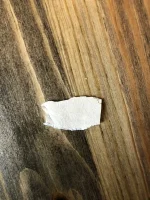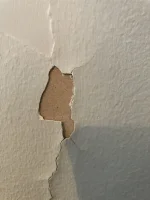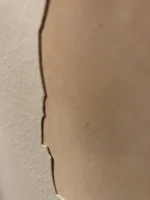Hi all.
This a my first post but i’ve spent a long time looking over all the helpful information on the site. I’m in need of some advice having read and watched so many conflicting things on the tinterweb. Apologies in advance for the long thread I’m just trying to give as much info as I can beforehand to set the scene.
I purchased an old Victorian (1905 I believe) house just over a year ago. When purchased it appeared that it had all been fully renovated with plastered walls etc. Unfortunately I wasn’t really clued up at the time on how old houses are (I came from a new build but wanted more space and character).
I’ve spent a year reading hundreds of articles and watching just as many YouTube videos, however there is so much conflicting information out there and I just need some guidance.
The house is semi detached and we’re getting damp patches / condensation in the far corners of the living room and then dining room. I believe this has a lot to do with condensation and the fact the wall is freezing cold to touch. This in turn attracts mould growth. Our bathroom is downstairs and we have had a wall extractor fitted and we also have a shower extractor. We keep the windows open and bathroom door shut and also run a dehumidifier for an hour or so after we leave the bathroom. We also do the same in the kitchen but we are due to have a fan put in there as there currently isn’t one.
We are also getting cracks appearing on the walls and I’m not sure what’s actually cracked. Some people have said it’s finish coat and others have said it’s thick paint cracking off and that maybe the guy who did the work painted over wet plaster (pics attached).
I’m basically trying to work out the best route to go down before I redecorate. We had thought of hacking the plaster off and then dot and dab / batten insulated boards with a vapour barrier on to stop potential mould growth behind the boards but we also have original coving that we would have to sacrifice if we go down this route. The other route is to maybe hack off and start again with some more breathable stuff. The front of the house is stone, the back and sides are 9 inch solid brick walls that’s rendered with cement I believe.
Any advice would be gratefully received.
Ryan
This a my first post but i’ve spent a long time looking over all the helpful information on the site. I’m in need of some advice having read and watched so many conflicting things on the tinterweb. Apologies in advance for the long thread I’m just trying to give as much info as I can beforehand to set the scene.
I purchased an old Victorian (1905 I believe) house just over a year ago. When purchased it appeared that it had all been fully renovated with plastered walls etc. Unfortunately I wasn’t really clued up at the time on how old houses are (I came from a new build but wanted more space and character).
I’ve spent a year reading hundreds of articles and watching just as many YouTube videos, however there is so much conflicting information out there and I just need some guidance.
The house is semi detached and we’re getting damp patches / condensation in the far corners of the living room and then dining room. I believe this has a lot to do with condensation and the fact the wall is freezing cold to touch. This in turn attracts mould growth. Our bathroom is downstairs and we have had a wall extractor fitted and we also have a shower extractor. We keep the windows open and bathroom door shut and also run a dehumidifier for an hour or so after we leave the bathroom. We also do the same in the kitchen but we are due to have a fan put in there as there currently isn’t one.
We are also getting cracks appearing on the walls and I’m not sure what’s actually cracked. Some people have said it’s finish coat and others have said it’s thick paint cracking off and that maybe the guy who did the work painted over wet plaster (pics attached).
I’m basically trying to work out the best route to go down before I redecorate. We had thought of hacking the plaster off and then dot and dab / batten insulated boards with a vapour barrier on to stop potential mould growth behind the boards but we also have original coving that we would have to sacrifice if we go down this route. The other route is to maybe hack off and start again with some more breathable stuff. The front of the house is stone, the back and sides are 9 inch solid brick walls that’s rendered with cement I believe.
Any advice would be gratefully received.
Ryan






